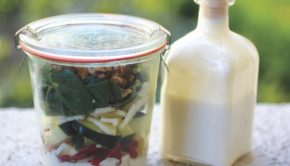A Dose of Life Force: The Ins and Outs of Intravenous Therapies
The human body can thrive when it receives and absorbs a full spectrum of vitamins and minerals, but due to an inadequate diet and compromised digestive system, the nutrients in food and oral supplements do not always hit their mark. The Harvard T.H. Chan School of Public Health recommends 13 organic vitamins and 16 inorganic minerals for optimum health, but many of the water-soluble, vital substances such as vitamin C and the B-complex vitamins may not get absorbed by the body and wash out in urine.
This is where intravenous nutrient therapies (IVNT) can fill in the metabolic gaps. Pioneered by the late Dr. John Myers in the 1970s, IVNT puts nutrition directly into the body, bypassing the digestive process to replenish vital elements. “As individuals age or take medications, absorption rates can decrease to as low as 3 to 5 percent,” says Dr. Mitchell Ghen, a clinician, researcher and author specializing in intravenous (IV) nutrition and psychoneuroimmunology in Boca Raton, Florida. “Intravenous nutrition offers a solution by ensuring 100 percent absorption of essential nutrients.”
IV Treatments
Beyond celebrity hype, claims of hangover cures and availability at trendy gyms, IV therapy is on the rise at health facilities. A study published in Frontiers in Oncology in 2014 showed that intravenous vitamin C treatments minimize chemotherapy-related fatigue and other symptoms in cancer patients and improve quality of life.
IV vitamin therapy might offer improvement for individuals with nutrient deficiencies. “Anyone who has malabsorption issues will greatly benefit from IV nutrient therapy. Those issues may be caused by bariatric surgery, gut resections with reattachment or diverting colostomy, chronic pancreatitis, infections such as tropical sprue, parasites, tapeworm, or genetic diseases like celiac,” states Jeffrey Weiss, an internal medicine doctor, naturopath and medical director of the Infusion Center of New Jersey.
According to Weiss, cardiac chelation shows promise for cardiovascular disease. “Intravenous di-sodium EDTA [ethylenediaminetetraacetic acid] acts as a magnet for plaque, grabbing onto it and flushing it out via the urine. I see incredible results from cardiac chelation for heavy metal detox, atherosclerosis and even critical valvular (mitral and aortic) stenosism,” he explains.
For allergy sufferers, IVNT can be an alternative to over-the-counter fixes. “Seasonal allergies manifest with elevated histamine levels. Intravenous nutritional intervention, including combining high-dose vitamin C, zinc and B vitamins with oral nutrients such as quercetin, vitamin D3 and curcumin can effectively alleviate these symptoms,” explains Ghen. For asthmatic patients experiencing broncho-spasms triggered by allergies, he adds, “Intravenous doses of magnesium sulfate can provide relief by relaxing the smooth muscle, therefore improving respiratory symptoms.”
Key Nutrients and Safety
For Ghen, optimal management of serious chronic diseases necessitates a broad approach. “Many of the disorders we encounter stem from underlying processes such as metabolic disturbances, infections, inflammation and oxidative stress,” he emphasizes. “While a multitude of nutrients can contribute to mitigating these disease processes, several components often stand out: vitamin C, valued for its anti-inflammatory and antioxidant properties; B vitamins; magnesium; and the number one intracellular antioxidant, glutathione.”
Weiss also spotlights glutathione as a powerful antioxidant and chelator that binds to heavy metals, mold, organic pollutants and environmental toxins, noting, “Fibromyalgia has a strong environmental etiology, with all my patients testing for some form of heavy metal or other toxicity.”
Ghen suggests pacing IV doses, tailoring treatments and conducting follow-up analysis. “As an educator who has trained over 3,800 physicians in the use of intravenous nutrition, I always emphasize safety. A well-trained intravenous healthcare practitioner adheres to a maximum infusion rate of 4 milliliters per minute,” elaborates Ghen. Before initiating IV therapy, he demands a comprehensive blood workup, and before each IV vitamin session, he requires an assessment of vital signs and urinalysis.
Caution should be exercised, especially with conditions like kidney disease, when high-dose vitamin C administration may exacerbate kidney failure. As for individuals with certain needs or that are on certain medications, Ghen clarifies, “Contraindications related to intravenous nutrition are primarily dosage-dependent rather than inherent to the natural components.” Vitamin C, commonly used as a base in intravenous mixtures, can pose challenges due to its high salt content. For patients with salt sensitivity or heart failure, Ghen points out that the typical doses may be contraindicated, but smaller doses remain an option.
To find a reputable IV treatment facility, visit IVTherapyDirectory.com.
Zak Logan is a freelance health writer dedicated to holistic living.




























